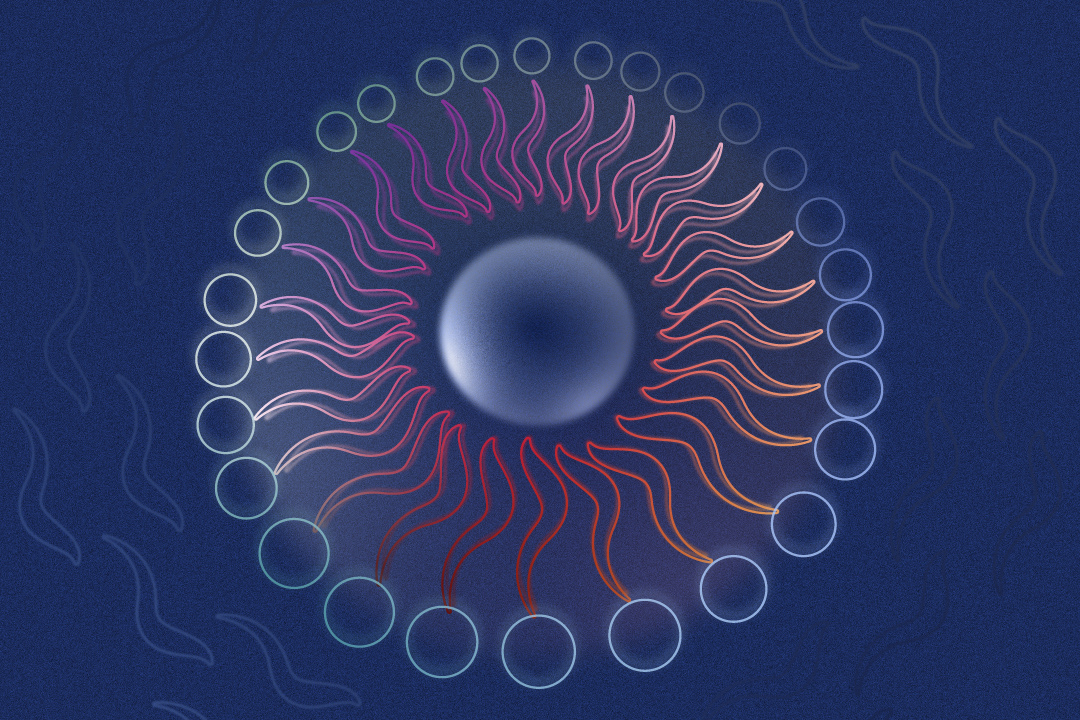In the past two decades, the use of nanoparticles — microscopic particles useful for a host of engineering and research problems — in medicine and biomedical research has gained a lot of momentum. These nanoparticles are synthesized from various molecules — such as lipids, organic polymers, and proteins — and generally range between 100–500 nanometres in size.
Due to their size, nanoparticles have properties that make them very attractive for drug delivery in the body. However, conventional nanoparticle platforms also have certain technical challenges and possible health risks that limit their use.
A team at the University of Toronto, led by Warren Chan, a professor in the Institute of Biomedical Engineering, has published a paper in the Journal of the American Chemical Society, demonstrating a way around these challenges. The team’s findings could provide scientists with a versatile and powerful platform for biomedical applications.
Why are nanoparticles used for drug delivery?
The United States Federal Drug Administration has approved over 51 nanoparticle products for diagnosing illnesses and treating them therapeutically in the past two decades. There are many advantages to using nanoparticles for delivering a drug. One major advantage of nanoparticles is that they allow for targeted drug delivery, where drugs are brought to the parts of the body that need them.
Wayne Ngo, a PhD student in Chan’s lab and lead author of the paper, explained why nanoparticles are useful for drug delivery in an interview with The Varsity. He said that using nanoparticles for drug delivery can minimize side effects, as it delivers the drug to the intended organ or tissue without affecting other organs.
This is important for cancer treatment, as the chemotherapy agents used in it are highly toxic compounds that kill both healthy and cancerous cells. Nanoparticles allow targeted delivery of chemotherapy agents to cancerous tissue and minimize drug accumulation in healthy tissues. This can increase the efficacy of chemotherapy and also reduce the side effects.
Additionally, for a drug to have therapeutic efficacy it must be able to dissolve in water. Certain chemotherapy drugs have poor water solubility. If these drugs are injected into the bloodstream on their own, they have very little therapeutic efficacy. However, storing these drugs in lipid-based nanoparticles can significantly improve their water solubility and improve their therapeutic efficacy.
Conventional nanoparticles versus DNA-based nanoparticles
There are some technical challenges to using lipid-based or polymeric nanoparticles for drug delivery. One challenge is that these delivery systems require the drug molecule to have specific chemical properties.
Ngo explained that it is challenging to store multiple drugs with different chemical properties into a single nanoparticle. The DNA-based nanoparticles developed by the researchers solve these problems by radically changing how drug molecules are stored.
Every DNA molecule is composed of two complementary strands. When these strands are close to each other, they bind like a zipper and form double-stranded DNA.
Each strand is made of four types of nucleic acid bases: adenine, cytosine, guanine, and thymine. Adenine in one strand pairs with thymine on the complementary strand, and guanine base pairs with cytosine. For two strands of DNA to be complimentary, all nucleotide bases in one strand must pair exactly with their complementary base on the other strand.
The researchers took advantage of the specific base pairing of complementary DNA strands to control storage of drug molecules in the nanoparticles in a very specific and controlled manner. At the first step, they synthesize a set of complementary DNA strands. Then, one strand is incorporated into the nanoparticle, and its complementary strand is attached to the drug of interest.
Finally, when nanoparticles and drug molecules are mixed together, the DNA strand in the nanoparticle binds to the complementary DNA strand on the drug. This way, the drug molecule is stored in the nanoparticle.
Applications of DNA-based nanoparticles
This technique has two significant advantages.
Because DNA base pairing is used to incorporate the drug into nanoparticles, the drugs’ chemical properties are not a limiting factor for storage. In this way, drugs with different chemical properties can be stored in the nanoparticle. Because scientists can design the complementary strands, they can also control the amount and ratio of different molecules being stored in each nanoparticle.
The ability to load different drugs into a nanoparticle is also beneficial for chemotherapy treatments. Sometimes, cancer tumours show resistance to a single drug. However, when multiple cancer drugs are delivered to tumours, therapeutic efficacy can improve significantly. Additionally, this platform enables researchers to control the exact amount and ratio of different drugs in each nanoparticle, which further helps cancer research.


